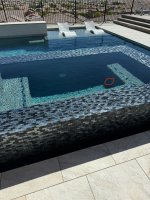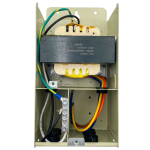- Apr 2, 2021
- 94
- Pool Size
- 17000
- Surface
- Plaster
- Chlorine
- Salt Water Generator
- SWG Type
- Pentair Intellichlor IC-40
I’ve been waiting for a pool company to come out to replace a Microbrite since the item was on backorder.
They came out yesterday, and when they pulled they pulled the light out, the back was completely melted and caught fire. Since the wire separated from the head of the light it was too far in the PVC to reach with a pair of pliers. They tried pulling the wire from the other end and it snapped. They think the wire when it caught fire somewhere fused to the PVC pipe, somewhere. But now both ends are no longer exposed.
I’m waiting to get a call from the local Pentair rep, but I’m curious as to what the best resolution might be? If Pentair gives me push back do I go back to the builder or do I need to stand firm with Pentair?
Picture of the light attached.
They came out yesterday, and when they pulled they pulled the light out, the back was completely melted and caught fire. Since the wire separated from the head of the light it was too far in the PVC to reach with a pair of pliers. They tried pulling the wire from the other end and it snapped. They think the wire when it caught fire somewhere fused to the PVC pipe, somewhere. But now both ends are no longer exposed.
I’m waiting to get a call from the local Pentair rep, but I’m curious as to what the best resolution might be? If Pentair gives me push back do I go back to the builder or do I need to stand firm with Pentair?
Picture of the light attached.










